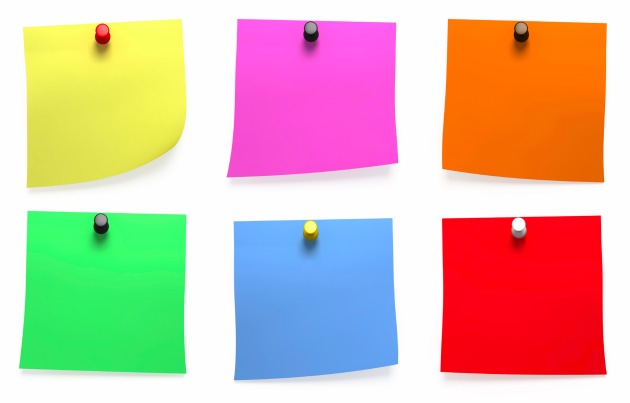Let’s start with the worst way to build a speech or presentation:
Staring at a blank screen – its blinking cursor mocking you – and trying to write it in one setting.
Hopefully, you’ve given yourself time to prepare. My presentation for TEDxMU is on April 14. When I was invited in February, I immediately went to work … in my mind.
I opened a new file in Evernote – my digital file cabinet, closet and mental warehouse. I have access to this application and this file on my computer and my phone – it syncs across everything – so I pretty much always have it with me.
That way – instead of staring at a blank screen – I could let life inspire me and trigger memories and stories and the seeds that would ultimately grow into my presentation.
For weeks now, I’ve been using our life and our stories as context and as catalysts to trigger the stories I’ll use to illustrate my thesis.
It’s not critical that I put the puzzle together during this time. It’s only important that I grab them out of the air and collect them all in one place. Sometimes one leads to another, and I may write down four or five little stories, points or moments in one fell swoop. Other times, I may go several days without jotting down anything at all.
It’s okay. It’s organic. It’s the best process – because nothing is forced and everything’s authentic.
I’m also noting WAY MORE than I could possibly cram into 60 minutes – much less the 18 I’ve been given for my TED talk.
That’s okay, too. Remember, we’re not synthesizing the talk yet. We’re not putting together the puzzle. We’re only laying out all the pieces.
Here’s my right-brain dump – copied and pasted directly from Evernote – so far:
Gotta define the spectrum and Will’s place on it. Gotta spell out expectations for someone with moderate autism before you get into characteristics.
Could pull vid from Will in Snow and the KOMU stuff.
1. You must Change you behavior before you can expect someone else to change theirs.
2. Call to action – Volunteer for a small npo
3. Don’t take things for granted – we had to teach our son to make eye contact
4. Fuel – diet
5. Clarity v Clever
6. Say ‘why not’ a lot
7. Some of the things we think are so important … aren’t.
8. Predict things.
9. Big Failures. Little victories.
10. Black holes are doorknobs. (Video)
11. Neubrander Train wreck metaphor – complex vs. simple problem.
“Daddy, I have a question.”
12. Speak I positives – hands off
13. Non-boehotiables
14. Consistency
15. Schedules
16. No magic bullets
17. TextingTHE EMPORER’S NEW CLOTHES – Will’s the kid that notices and calls you out.
Use that pic of W and Mater as cover slide
Break Time – Would you like to donate $1 to autism research and treatment? Miss, I’ve donated about two hundred grand o autism research and treatment. How about you give me a dollar.
James Gould Cozzens – point 1
Close : Truth is – we all have special needs: to belong, to make a difference – Maslow.
“You shouldn’t put the word ‘autistic’ first.” Shut up. That’s taking your eye off the ball.
The greatest expression of commitment is PATIENCE.
The magic is not in the size of your steps but the relentlessness.
It takes a team. It takes a whole community.
Diet matters.
Defy odds. We’ve pulled him across the spectrum. We are still married.
“You should really watch your child.”
Takeaway: we need you. We need each other to be good. We need to stop playing FarmVille.
Play it straight. The impact of Will’s questions and sayings is that he’s not trying to be funny.
Remain calm when teaching or correcting behavior.
Kindness – because autistic persons are predid posed to little to no empathy (bbc psa), we work and work to little progress. That’s makes kindness so crucial in all other areas. I’ve lost all patience for snark and sarcasm.
The Bridge to Close – before the reveal of “we all have special needs” and Maslow is “There is no them.”
Add famous people thought to have autism/aspergers
Nadia story about Michael –Dear Grandfather. You are fish tank.Think different.“Daddy, I have a question.”Black holes are doorknobs.
Remember – and this is important – as you collect your nuggets, you don’t need to write down the whole story from a moment. Take the last one – I only need to jot down “Black holes are doorknobs,” and I remember the whole story. You will do the same.
To recap your new killer presentation-building toolkit so far, we have:
1. Ask the six simple questions to begin to shape your speech.
2. Make it child’s play by thinking about what questions your audience might have about your topic. Answer them.
3. Give yourself time and freedom to let the mind wander back to stories and thoughts about your topic. Collect them somewhere.
You’re really going to rock. You know that, right?


It is helpful during the right brain dump process to always have something to write down as soon as possible (immediately is best) what comes to mind. My experience with this process is that if you do those two things, i.e. write it down and do so immediately, by the end of the week, your brain will be flooding you with memories, ideas, etc.
Yes! That’s why carrying a notebook – or having a phone app that’s got somewhere you can type … or even a voice recorder in the car … are crucial! Agreed.